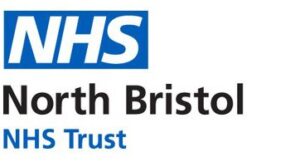In cases around vulnerable children, we repeatedly see how many different agencies and professionals are involved in their story. For a young person in the youth justice system, there are several agencies all attempting to intervene to improve their outcomes; youth justice teams, police, social workers, their school, parents and health workers. With so many agencies potentially in play, how can a clear and consistent thread of information be created on each young person for the betterment of their journey?
A single view of the child for youth justice workers
Having access to a single thread of information, a single source of the truth, is vital. It helps to remove duplication of effort not only for each agency, but for the young person, too. With multifarious agencies turning up on a carousel of touchpoints along the journey, many covering the same ground, it erodes trust in the services that are in situ to help them.
It can be challenging enough within a single agency. Youth justice teams are stretched. Human relationships don’t work to a set plan, so changes in personnel across a young person’s journey are inevitable. How can a practitioner who is new to a young person’s case understand and interpret their story without needing to repeat previously asked questions?
A central database of activities, touchpoints and notes is essential. A single thread of information makes it easier for information to be looked at and understood. If notes are siloed into individual practitioners, for example if they are recorded only via pen and paper, then it makes it incredibly difficult for others to pick up the pieces when they need to.
If interoperability between practitioners within the same agency is impossible, then how can this information be shared effectively with other agencies?
Achieving interoperability for the benefit of youth justice work
Interoperability starts within a single agency, in the way in which information is recorded, shared and understood within it. Interoperability then needs to extend to multi-agency scenarios.
The several touchpoints in the journey of a young person within the youth justice sector demonstrate this. How can the police effectively share information with the other agencies involved? How can youth justice teams make their information available to the other agencies? By creating a mutual base of understanding around each vulnerable young person.
Understanding is essential to improving outcomes. We also see the affect of things such as trauma in a young person’s story. How can their story and circumstances be interpreted in improving their outcomes? These often intangible aspects can go undetected – having a consistent base of information can help in identifying them. There’s no one size fits all solution to dealing with youth offending, so being able to interpret and understand their journey from a comprehensive base of information is crucial.
A single source of information is to the benefit of everyone; the young person, their family and the agencies involved in their journey. But how can this be achieved?
Technology response to interoperability
The underlying system of recording information is fundamental in achieving this. In the same way that there is no one size fits all approach to improving outcomes for vulnerable young people, there is no one size fits all technology system for the agencies involved in their journey.
It is inevitable that different agencies will deploy different technology. Information and security will be different for each, as will the method of recording of information. But how can the relevant information within each agency be made available for wider use by external agencies which are seeking the same outcomes?
Everyone is pulling in the same direction, so it makes sense to share information and valuable insight. Each agency needs to understand the intervention points of the others.
Conclusion
Every touchpoint recorded with a young person in the youth justice sector is relevant to their journey. It forms part of the system response to them and their case. Having a holistic view of these touchpoints is vital for youth justice teams and workers in interpreting their story and intervening appropriately to help improve their outcomes.
Creating a single view of each child helps each agency to better contribute to their journey. Interoperability of systems is essential in achieving this. Using software that facilitates interaction and data sharing with other agencies utilising different software will facilitate this.
Where information gets siloed, it essentially gets lost. It sits within an agency in isolation, useless to the other touchpoints a vulnerable young person will have with other agencies. Bringing this information together not only creates understanding around a young person’s journey, it also creates efficiency in the process for the agencies involved.
If everyone can record on and interact with a single source of the truth, it will help every agency and youth justice worker to understand and interpret the journey of the young person.








